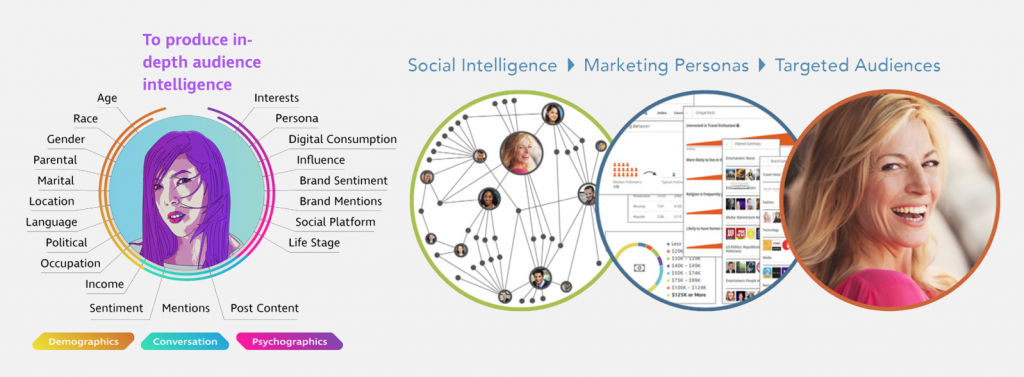What we know from our very short history of living online is that community precedes commerce; there’s no commerce without community. ~Kevin Kelley
LIMERENCE: Communities fostering “limerence” with their members in digital networks have discovered this simple truth: a desire for interconnection and interaction with other sentient beings drives a majority of searches and relationships in social networks. Investing FIRST in relationship and community leads to positive dividends in terms of customer equity AND market share. The time of the CIRCLE has arrived.
Limerence is the ethos of the Greek god Eros, who arrives where beings need freedom. And need it bad! Eros is a very important figure as related to social networks, which are characterized by the feminine principle of “circling” during crisis. Carl Jung, the Swiss psychiatrist, writes, “Woman’s psychology is founded on the principle of Eros, the great binder and loosener, whereas from ancient times the ruling principle ascribed to man is Logos. The concept of Eros could be expressed in modern terms as psychic relatedness, and that of Logos as objective interest.” “Psychic relatedness” is a critical factor in the growing of communities within social networks and an important concept to deeply understand for anyone involved in social business.
WHAT IS CIRCLE THINKING? At the core of true circle (social) ethos is the practice of speaking and listening from the heart. When humans are compassionate, heartfelt and empathic, and listen without judgement…when humans engage in non-hierarchical forms of deep communication, a group’s vision and purpose emerges naturally and beautifully.
Circles offer effective means of resolving conflict and for discovering deeper, often unexpressed needs within the hearts of individuals and organizations. Circles foster co-visioning born out of our personal and collaborative stories. Social story-telling is a more accurate method of solving real problems than the political games humans play to survive within strict hierarchies.
Social networks have introduced the global community to collective psychic experiences on an unprecedented scale. The logos of the soul, psychology, implies the act of traveling the soul’s labyrinth in which we can never go deep enough (James Hillman). The entire fabric of human culture, it’s very dimensionality, has undergone a profound shift into an experience of depth and the outcome of such a shift is connection between individuals and communities like never before. It’s a shift toward collaboration and connection.
COLLABORATION: Peter Economides, one of the world’s greatest brand strategists, writes, “Strategy is nothing without a universally compelling, and individually enchanting big idea that engages and aligns people inside and outside the corporation.” We live in times when social strategy teams must lead agencies, brands and entire organizations into new territory of collaboration…territory that binds staff together within through threads of common passion. Such organizations move out into social networks united in a single “heart-ethos” and this is felt in the emotionally-tactile comment-threads and newsfeeds within social networks. As social business teams, we engage in programs that effect the exact same culture change WITHIN the enterprise that we seek in our customer base, in our community, in our customer-facing programs.
SOCIAL RESPONSIBILITY THROUGH COMMUNITY CREATION:
Brands hire Social Agencies to train Community Managers, establish social media policies and then go to the races together for a 1-year period. The GOAL for The Brand is independence from The Agency. It’s time to shift the focus away from “How can we do this fast and cheap?” TO “We’re committed long-term to growing the Brand’s community!”
Every major brand in large markets launching a social campaign should seriously consider performing the following steps:
1. INTEL: Social Intelligence to gather initial insights on what customers are saying, where key influencers locate (and what they are saying) and what content is sticky NOW.
2. STRATEGY: Strategy for a Community Manager built upon Recommendations derived from Insights found through Social Intelligence gathering. Scripting of initial content, creation of a campaign or two, and clever content development are ALL actions to be created at this stage.
3. HR: Hiring of the Community Manager. Agreement on policies.
4. GO: Action! On-going training and deepening of the content and community. Target specific user-groups, such as Mommy Bloggers, through organic community growth via your Community Manager. You need to think of the social networks as parties/gatherings that your Community Manager is walking into and conversing within.
COMMUNITY MANAGER TRAITS AND ACTIONS: The BEST Community Managers are a combo of a Journalist (who writes on the fly, does excellent research and is an investigator) AND a Socializer. Your content-marketing strategy is critical here.
a. Sequence a chronology of content-marketing that makes sense and follows a kind of story.
b. Be a story-teller. Involve people in the story of an employee’s climb to manager, for instance. Or a love story between patrons. Or in the value of having a “third-space” at retail outlets for students OR businessmen. This is where you get creative and give your Community Manager some wings to fly. Sticky content is passed on.
c. Your Community Manager should be involved in conversations, watching for trends in Twitter using monitoring tools and producing attractive content. The result will be an engaged following getting to know one another and forming a positive community around The Brand. Quality Content IN a Quality Context!
On a final note, hierarchies are being replaced by circles EVERYWHERE!!! Start within…you’ve got a hierarchy WITHIN yearning for a circle’s embrace right NOW!! Bring the gift of that inner circle to yourself, your loved ones, your social circles, your work!



